Radio was largely considered a curious novelty when stations were first being established around the country in the early and mid-1920s, but by 1930 it had become a commercialized mass medium with its own pantheon of celebrities. Nationally syndicated programs presented by corporate sponsors created radio stars whose voices became recognizable commodities used to advertise to a rapidly growing listener market. Bing Crosby, for instance, became the voice of Woodbury Facial Soap, and crooner Rudy Vallée wooed the public on behalf of Fleischmann’s Yeast.
Accompanying the radio revolution of the early ’30s were fan magazines such as Radio Stars, Radio Digest, and Radioland, which featured photographs of popular personalities and details about their private lives. Gossip journalists such as Walter Winchell delved into the alleged personal affairs of the new celebrities. Through his radio show and newspaper column, he ushered in a new—and often unsavory—era of celebrity journalism.
Fan mail and letters to the editor in these pulp publications enabled readers to interact with and feel vested in radio. Modern celebrity was emerging: radio stars were objects of both recognition and aspiration, providing fans with more glamorous, interesting, and dramatic reflections of themselves. This phenomenon would only grow in strength with the rise of film and television.
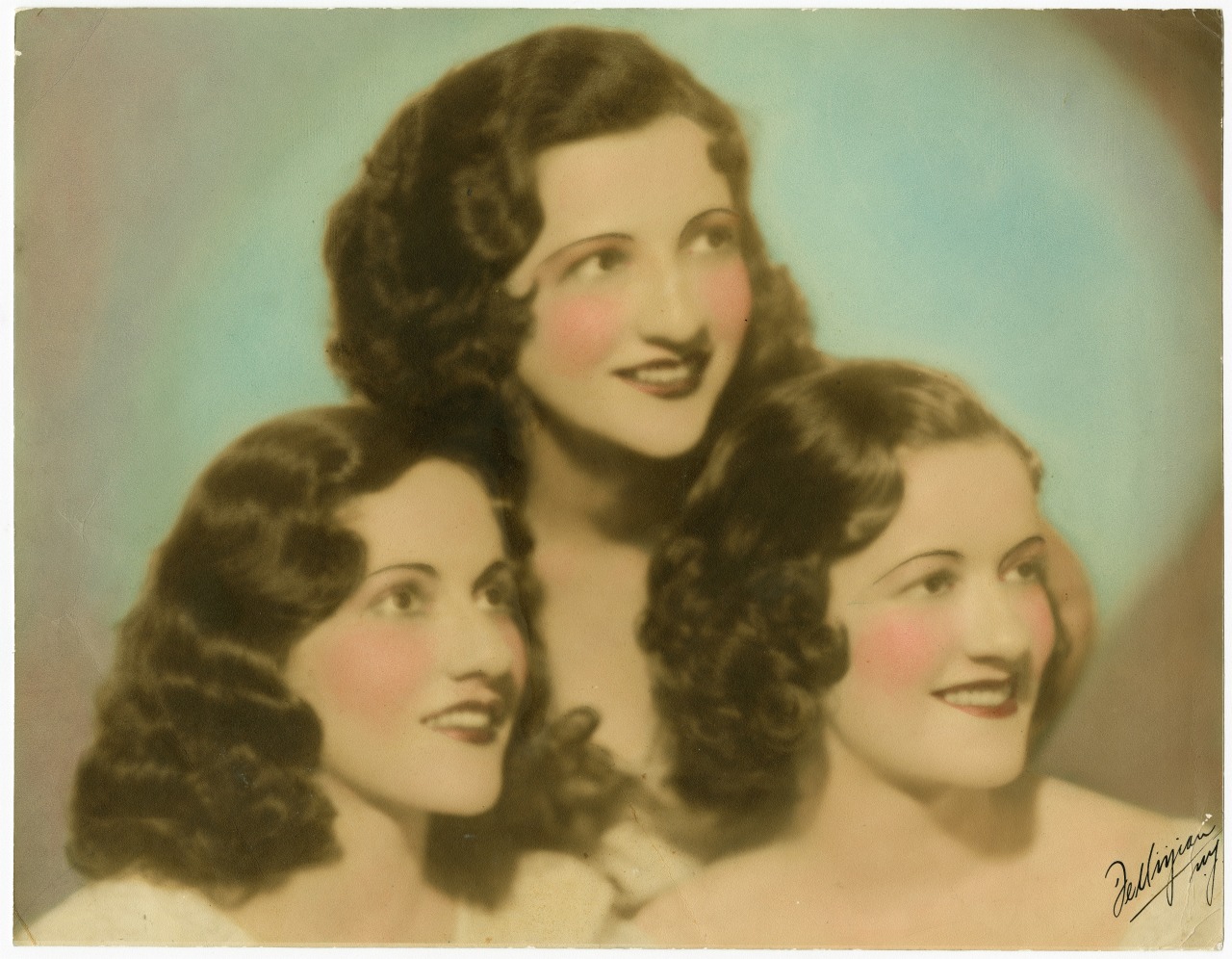
The Boswell Sisters
1932; photoprint
by John de Mirjian, photographer
The Historic New Orleans Collection, gift of the Boswell Museum of Music, 2011.0315.83

Illustration of the Boswell Sisters
n.d.; pen and ink, watercolor
by Dorothy Edwards
The Historic New Orleans Collection, gift of the Boswell Museum of Music, 2011.0315.79
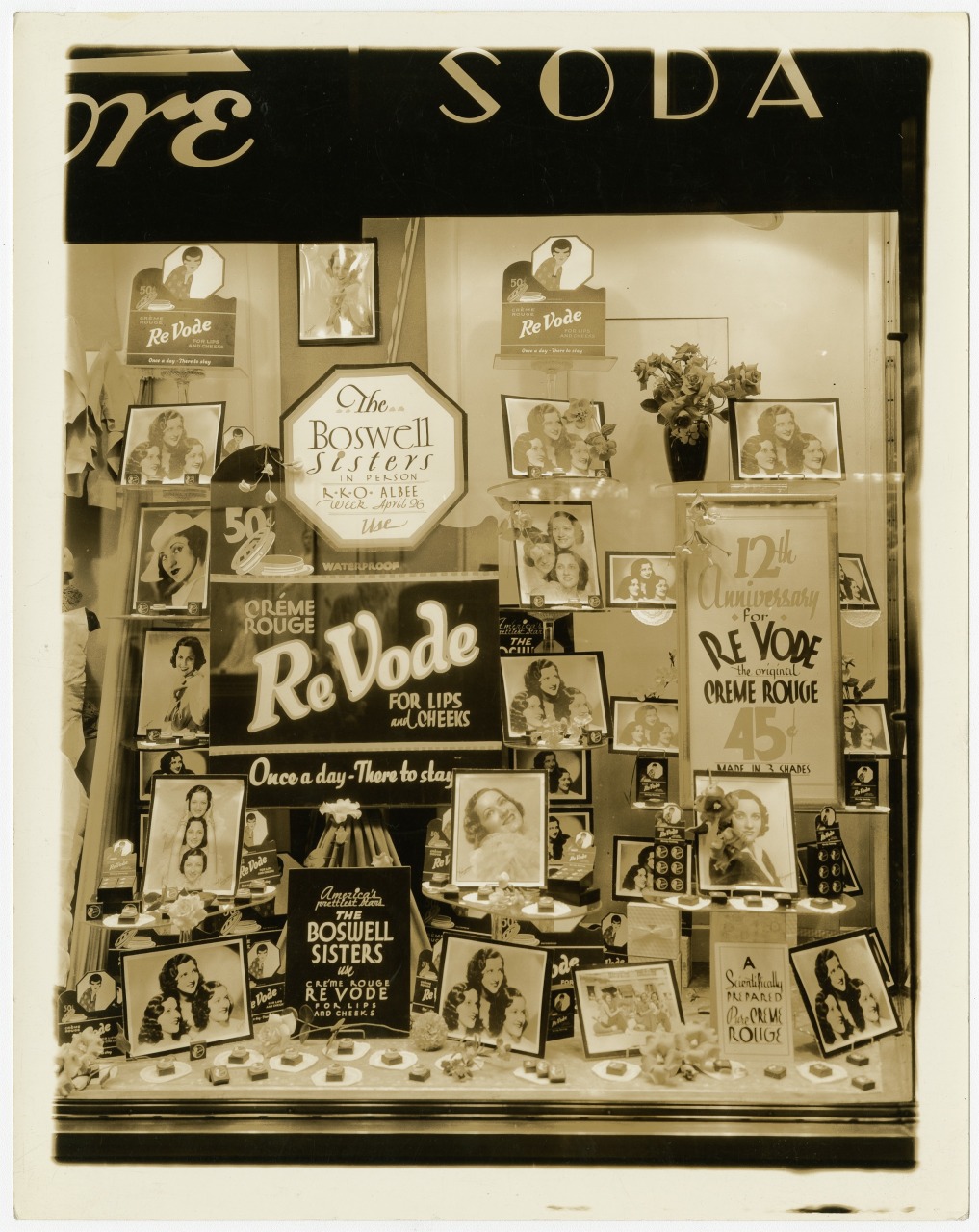
ReVode Creme Rouge store-window display
between 1934 and 1935; photoprint
The Historic New Orleans Collection, gift of the Boswell Museum of Music, 2011.0315.116
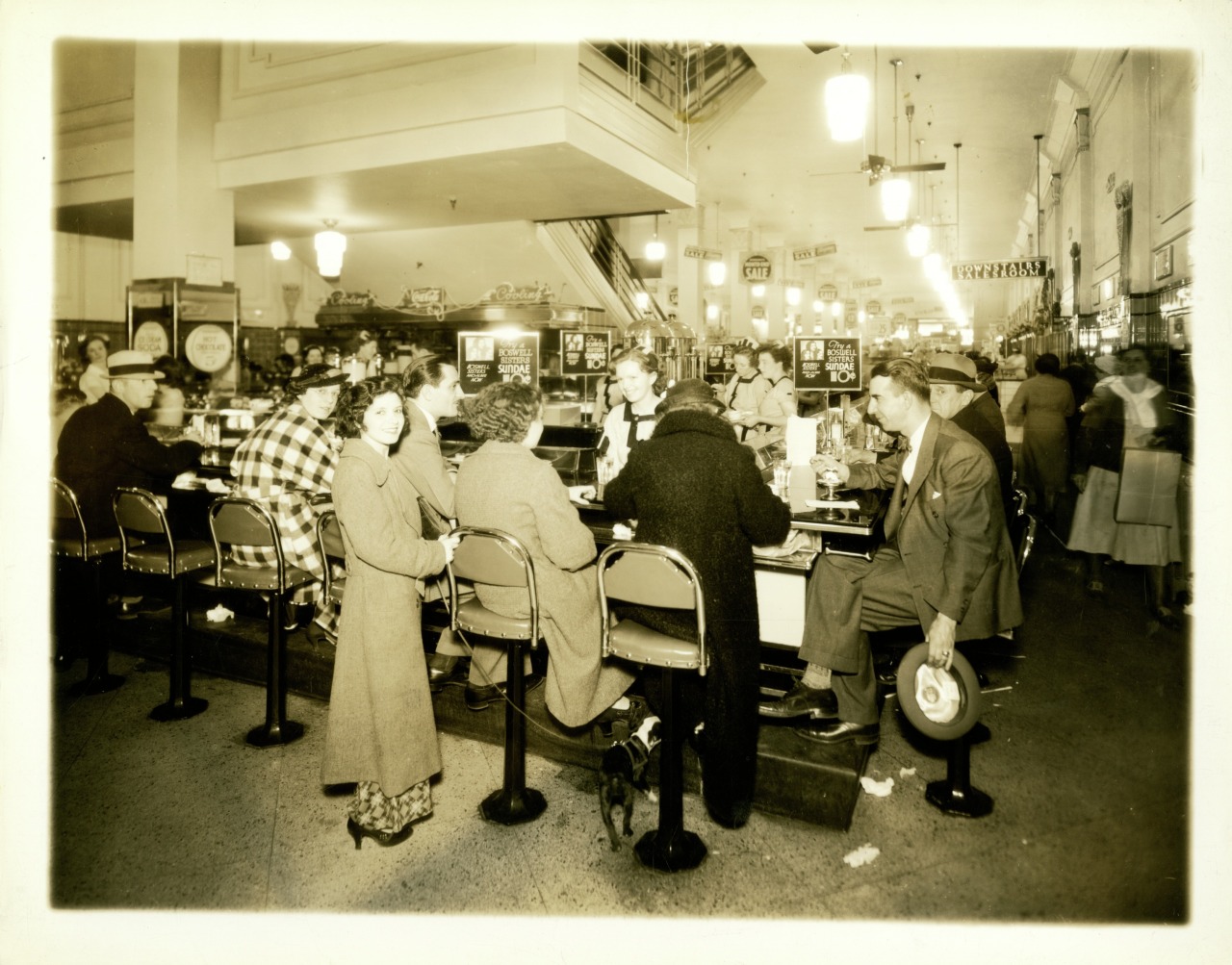
Crowd at a soda fountain offering a “Boswell Sisters Sundae”
between 1934 and 1935; photoprint
The Historic New Orleans Collection, gift of the Boswell Museum of Music, 2011.0315.117
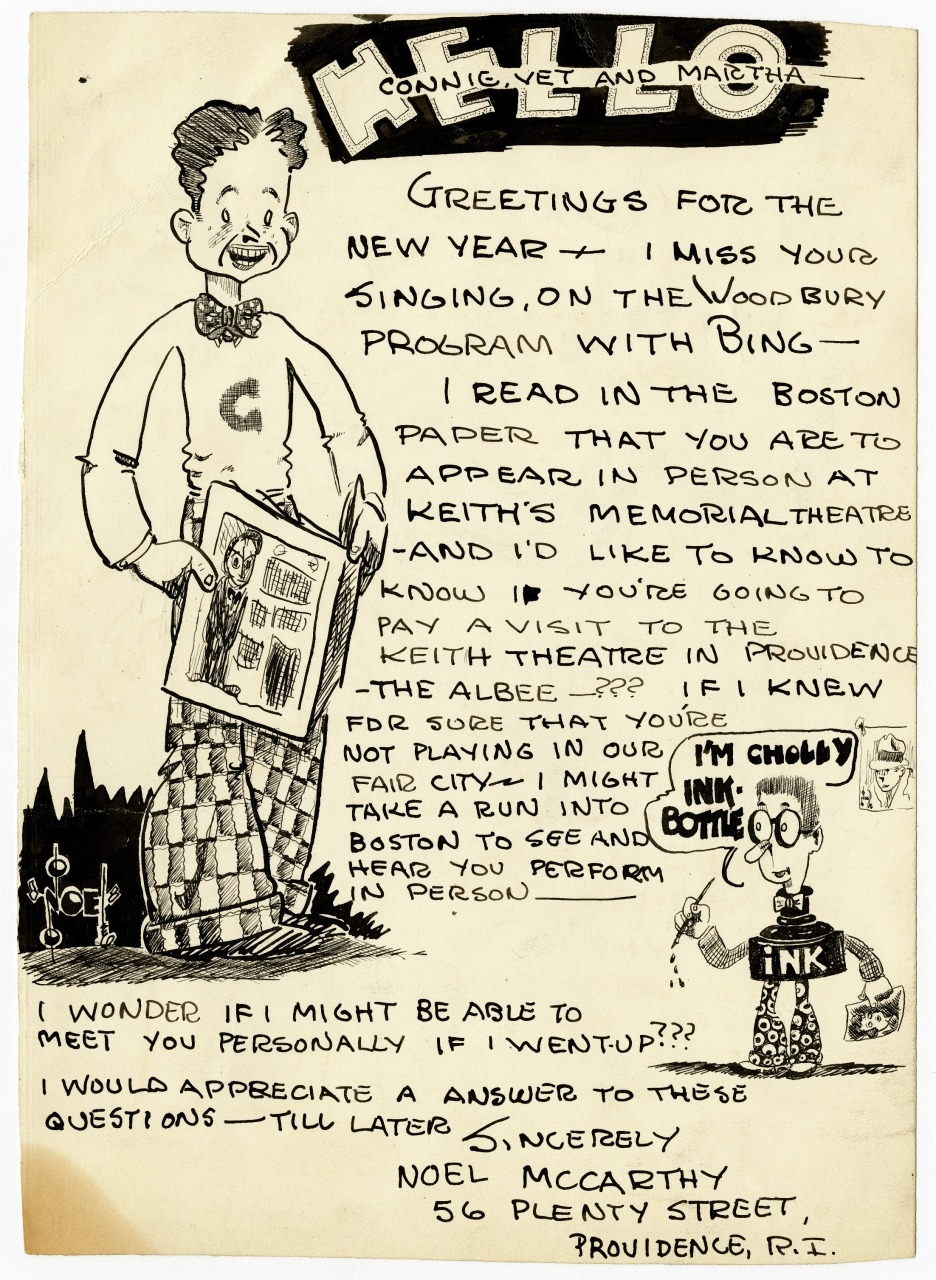
Illustrated fan letter from Noel McCarthy
1935; correspondence, with illustration
by Noel McCarthy, author and artist
The Historic New Orleans Collection, gift of the Boswell Museum of Music, 2011.0315.14
Edward Noel McCarthy was a young man of twenty-two, living with his family in his native Rhode Island, when he wrote of his admiration of the Boswell Sisters. Like many young artists, McCarthy worked day jobs, as a chauffeur and a clerk, in Providence. He eventually struck out for Los Angeles and was able to craft a career from his talent, working for the Walt Disney Productions as an apprentice animator from 1944 through 1946.
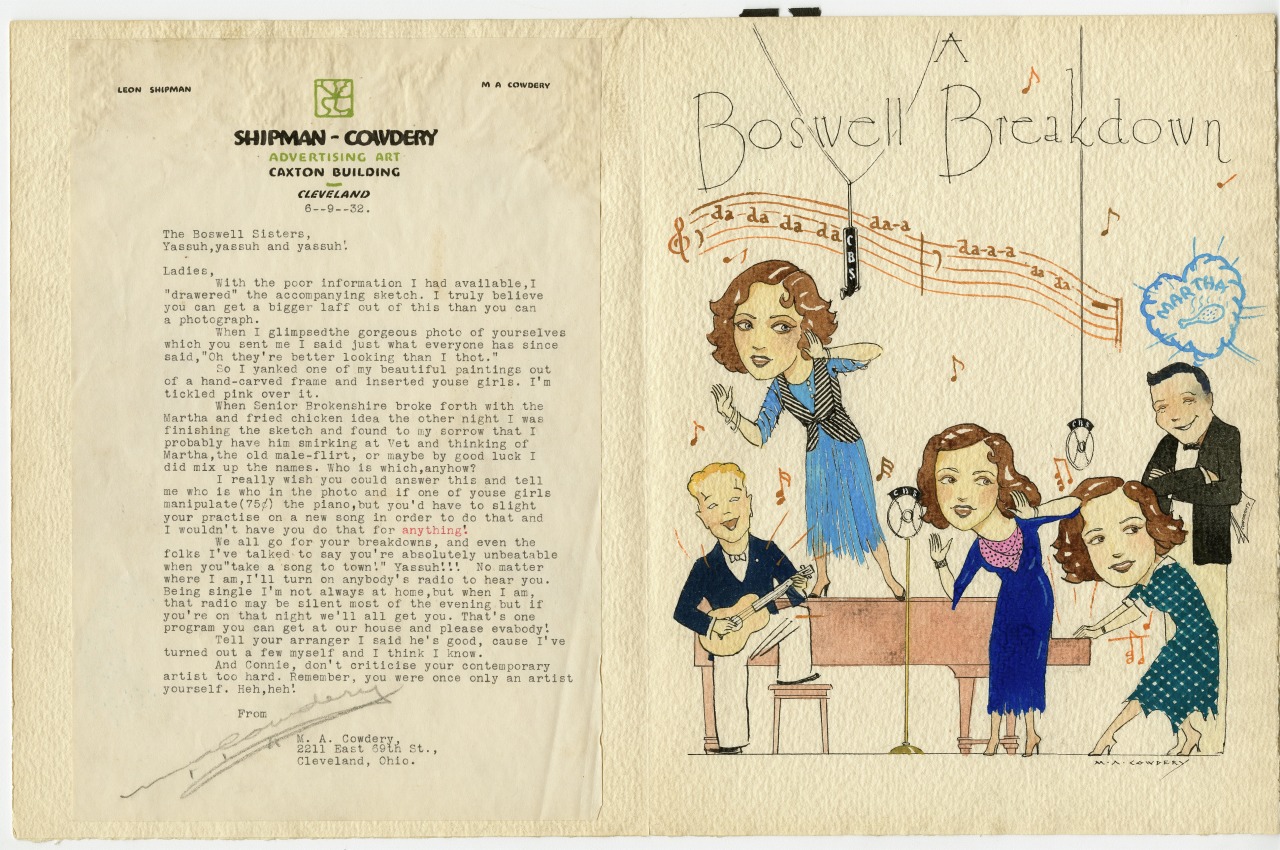
Ilustrated fan letter from M. A. Cowdery
1932; correspondence, with illustration
by M. A. Cowdery, author and artist
The Historic New Orleans Collection, gift of the Boswell Museum of Music, 2011.0315.8
Born and raised in Cleveland, Ohio, Morris A. Cowdery (1890–1950) was a talented artist. While attending Cleveland’s Central High School, Cowdery, who was African American, served as a cartoonist for all of the school’s publications. His artistic talent translated into a career in advertising, and in 1915 he joined fellow Cleveland artist Leon Shipman to form the Shipman-Cowdery Studio. In this June 1932 fan letter, he references the Boswells’ appearance on a recent broadcast of "Music That Satisfies," a radio program that aired on CBS Mondays and Thursdays.
